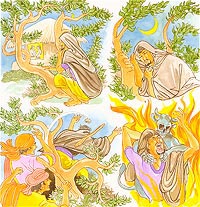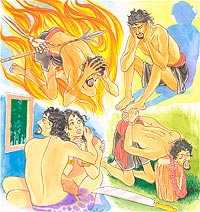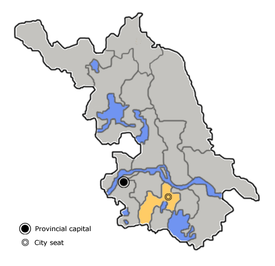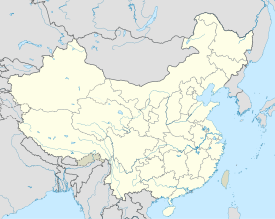22 08 2012 Wednesday LESSON 684 FREE ONLINE eNālāndā Research and Practice UNIVERSITY
through
http://sarvajan.ambedkar.org
Tipitaka network … his life, his acts, his words
sabbe satta bhavantu sukhi-tatta
TIPITAKA ![]() மூன்று கூடைகள்— The words of the Buddha புத்தரின் வார்த்தைகள்—Majjhima மத்திம Nikāya
மூன்று கூடைகள்— The words of the Buddha புத்தரின் வார்த்தைகள்—Majjhima மத்திம Nikāya
நடுத்தரமான நீள அளவு திரட்டுகள் -Sabbāsava Sutta எல்லா களங்கங்களின் நெறி முறைக் கட்டளை ஆணை
Dhammapada Verses 309 and 310-Khemakasetthiputta Vatthu-Verse 309. The Man Who Covets Another’s Wife-Verse 310. Shun Adultery
AWAKEN ONES WITH AWARENESS IN CHINA
Jiangsu
• Hanshan Temple
• Huqiu Tower
• Jiming Temple
• Linggu Temple
• Qixia Temple
• Tianning Temple (天宁宝塔), Changzhou, the tallest pagoda in the world. Height: 153.8 metres (505 ft).
TIPITAKA AND TWELVE DIVISIONS
Brief historical background
Sutta Pitaka
Vinaya Pitaka
Abhidhamma Pitaka
Twelve Divisions of Buddhist Canons
Nine Divisions of Buddhist Canons
Sutta Piṭaka
Buddha Vacana புத்த வசனா
Cavukatar/Tatākata/Ciṉa/Arhat/Piṭaka/A
Doctor/A Physician/Cātta/Argha/Cukata/Gautama/Kripacharya/kṣapaṇaka/
muṉaiva/cittārtta/Pungkava/The Supreme Deity/ A Guru/ Tamōpaka/Light
/Brightness/ The Moon/he Sun/one of the 1 vital airs , that which is
exhaled in yawning/ Mūrtti/The Body/Figure /Shape/A Form of
Deity/Tamōkkiṉa/The Fire God/Baghava/The Supreme
Being/Siva/Vishnu/Brahma/Muṉi/An Ascetic/A Devotee/A Hermit/
sage/Vinayaka
கலைநாயகர்/சாக்கியமுனிவர்/தயாகூர்ச்சர்/
சவுகதர்/புத்தர்/ததாகதர்/சினர்/அருகர்/பிடகர்/
சாத்தர்/மூர்த்தி/தேவன்/உருவம்/சுகதர்/கௌதமர்/க்ஷபணகர்/முனைவர்/சித்தார்த்தர்/புங்கவர்/குரு/தமோபகர்/
வெளிச்சம்/தமோக்கினர்/அக்கினி/சந்திரர்/பகவர்/வனவாசி/ஞானி/
கடவுள்/சிவன்/விஷ்ணு/பிரமன்/விநாயகர்
It
may be, Ananda, that to some among you the thought will come: ‘Ended is
the word of the Master; we have a Master no longer.’ But it should not,
Ananda, be so considered. For that which I have proclaimed and made
known as the Dhamma and the Discipline, that shall be your Master when I
am gone.
Sutta Piṭaka
நெறி முறைக் கட்டளை ஆணைக் கூடை
Sutta Pitaka (Sayings Basket) is the second of the three divisions of the Tipitaka (It is made up
of two words, ti means ‘three’ and pitaka means ‘baskets’.)
நெறி முறைக் கட்டளை ஆணைக் கூடை மூன்று கூடைகளில் மூன்று மண்டலங்களின் இரண்டாவதானது.
புத்தரின் தம்மாசம்பந்தமாக போதிக்கப்பட்ட கோட்பாடுகளின் இன்றியமையாத பொருள். அது பத்து ஆயிரத்திற்கும் அதிகமான நெறி முறைக் கட்டளை ஆணைகளை உள் அடக்கியுள்ளது. அது Nikāyas என அழைக்கப்படும் ஐந்து திரட்டுகளின் பாகங்களாகப் பிரிக்கப்பட்டுள்ளது.
Majjhima மத்திம Nikāya
நடுத்தரமான நீள அளவு திரட்டுகள்
[ majjhima: medium ]
The Majjhima Nikāya gathers 152 discourses of the Buddha of intermediate length, dealing with diverse matters.
- Sabbāsava Sutta (MN 2) {excerpt} - plain texts
- The Buddha exposes here the different ways by which the
āsavas, fermentating defilements of the mind, are dispelled. This
excerpt contains a definition of what is yoniso and a-yoniso manasikāra. - Bhayabherava Sutta (MN 4) {excerpt} - plain texts
- In this sutta, among other things, the Buddha expounds the three vijjās he attained during the night of his enlightenment.
- Vattha Sutta (MN 7) {excerpt} - plain texts
- In this sutta, the Buddha, among other things, defines sixteen upakkilesas.
- Mahāvedalla Sutta (MN 43) {excerpt} - all infobubbles
- Sāriputta answers various interesting questions asked by
āyasmā Mahākoṭṭhika, and in this excerpt, he explains that Vedanā, Saññā
and Viññāṇa are not clearly delineated but deeply interwoven. - Cūḷavedalla Sutta (MN 44) {excerpt} - plain texts
- The bhikkhuni Dhammadinnā answers a series of interesting
questions asked by Visākha. Among other things, she gives the 20-fold
definition of sakkāyadiṭṭhi. - Sekha Sutta (MN 53) - enhanced ATI
- The Buddha asks Ānanda to expound the Sekha Paṭipadā, of which
he gives a surprising version, from which Satisampajañña and
Nīvaraṇānaṃ Pahāna are curiously replaced by a series of seven ‘good
qualities’, and which is illustrated by a telling simile. - Bahuvedanīya Sutta (MN 59) {excerpt} - all infobubbles
- In this short excerpt, the Buddha defines the five kāmaguṇās and makes an important comparison with another type of pleasure.
- Saḷāyatanavibhaṅga Sutta (MN 137) {excerpt} - plain texts
- In this deep and very interesting sutta, the Buddha defines
among other things what are the investigations of pleasant, unpleasant
and neutral mental feelings, and also defines the expression found in
the standard description of the Buddha: ‘anuttaro purisadammasārathī’.
Majjhima மத்திம Nikāya
நடுத்தரமான நீள அளவு திரட்டுகள் புத்தரின் பல்வேறு வகைப்பட்ட விஷயங்களின் செயல் தொடர்பு உடன் 152 கொய்சகமாக்கப்பட்ட மத்திமநீள அளவு திரட்டுகள்
எல்லா களங்கங்களின் நெறி முறைக் கட்டளை ஆணை
Very interesting sutta, where the different ways by which the āsavas, fermentating defilements of the mind, are dispelled.
மிக சுவாரசியமான நெறி முறைக் கட்டளை ஆணை.இங்கு மனதை நுரைத்தெழச்செய்து கறைப்படுத்தும் asavas புலனுணர்வை
ஆட்கொண்ட மற்றும் மட்டுமீறிய சிற்றின்ப ஈடுபாடு, வாழ்க்கை பசி வேட்கை,
கனவுகள் நிறைந்த ஊகக் கோட்டை மற்றும் அறிவின்மை போன்ற இகழத்தக்க
செய்திகளை விரட்ட வேறுபட்ட வழிவகைகள் எவை என வெளிப்படுத்தல். இந்த
நுலிலிருந்து எடுத்த பகுதி ஒரு சொற்பொருள் விளக்கம் யாவையும் உட்கொண்டு
பாண்டியத்தியமுள்ள, மெய்யாக, வினாவுள்ள, தகுதியாக, கருதுதல்.
- Sabbāsava Sutta (MN 2) {excerpt} - plain texts
- The Buddha exposes here the different ways by which the
āsavas, fermentating defilements of the mind, are dispelled. This
excerpt contains a definition of what is yoniso and a-yoniso manasikāra. - புத்தர்
இங்கு மனதை நுரைத்தெழச்செய்து கறைப்படுத்தும் asavas புலனுணர்வை
ஆட்கொண்ட மற்றும் மட்டுமீறிய சிற்றின்ப ஈடுபாடு, வாழ்க்கை பசி வேட்கை,
கனவுகள் நிறைந்த ஊகக் கோட்டை மற்றும் அறிவின்மை போன்ற இகழத்தக்க
செய்திகளை விரட்ட வேறுபட்ட வழிவகைகள் எவை என வெளிப்படுத்தல். இந்த
நுலிலிருந்து எடுத்த பகுதி ஒரு சொற்பொருள் விளக்கம் யாவையும் உட்கொண்டு
பாண்டியத்தியமுள்ள,மெய்யாக,வினாவுள்ள,தகுதியாக, கருதுதல்.
PāḷiEvaṃ me sutaṃ: ekaṃ samayaṃ bhagavā sāvatthiyaṃ viharati jetavane anāthapiṇḍikassa ārāme. Tatra kho bhagavā bhikkhū āmantesi: ஏவங் மே சுத்தங்: ஏவங் சமயங் பகவா சாவத்தியங் விகாரத்தி ஜேதவனே அனாதபின்டிகஸ்ஸா ஆராமே. தத்ரா கோ பகவா பிக்கு (சீவகர்) ஆமன்தேசி |
EnglishI have heard that on one occasion the Blessed One was staying at Savatthi, in Jeta’s Grove, Anathapindika’s monastery. There he addressed the monks: நான் இந்த நெறி முறைக் கட்டளை ஆணையை கேட்டேன்: ஒரு சமயத்தில் பகவா, சாவத்தி விகாரம், ஜேதவம், அனாதபின்டிகாவின் துறவிமடத்தில் தங்கியிருந்தார். அங்கே அவர் பிக்குகளுக்கு பேருரையாற்றினார். |
||||||||||||||||||||||||||||||||||||||||||||||||||||||||||||||||||||
|
– பிக்குகாவோ’தி – ‘Bhadante’ti te bhikkhū bhagavato paccassosuṃ. Bhagavā etadavoca: - பதந்தே’தி தே பிக்கு பகவதோ பச்சாஸோஸும். பகவா எடதாவோசா: |
– பிக்குகபிக்குகளே – Yes, lord, the monks responded. The Blessed One said: - ஆமாம், பதந்தே, பிக்குகபிக்குகள் பிரதிபலித்தனர். பகவா சொற்றார்: |
||||||||||||||||||||||||||||||||||||||||||||||||||||||||||||||||||||
|
– -ஸப்பாஸவஸங்வரப்பரியாயங் வோ, பிக்காவே, தெஸஸ்ஸாமி. தங் ஸுனாத, ஸாதுதங் மனஸி கரோத, பாஸிஸ்ஸாமி’தி |
– -நான் உங்களுக்கு எல்லா நொதித்தல்களையும் கட்டுப்படுத்தும் ஒழுங்குபட்ட வழக்கங்களை கற்றுக்கொடுக்கிறேன்,பிக்குகபிக்குகளே, கவனமாக உன்னித்து கேள்ளுங்கள்.நான் பேசுவேன். |
||||||||||||||||||||||||||||||||||||||||||||||||||||||||||||||||||||
|
– -ஏவங், பந்தே’தி கோ தே பிக்கு பகவதோ பச்சாஸோஸும். பகவா எடதாவோசா: |
– - உங்கள் கூற்றுபடியே, பந்தே, என பிக்குகபிக்குகள் பிரதிபலித்தனர்.பகவா சொற்றார்: |
||||||||||||||||||||||||||||||||||||||||||||||||||||||||||||||||||||
|
– Jānato ahaṃ, bhikkhave, passato āsavānaṃ khayaṃ vadāmi, no ajānato no - ஜானதோ அகம், பிக்காவே, பஸ்ஸதோ, ஆஸவானங் காயங் வதாமி, நோ அபஸதோ. கின்சா பிக்காவே, ஜானதோ கின்சா பஸ்ஸதோ ஆஸவானங் காயங் வதாமி? யோனிஸோ சா மானஸிகாரங் அயோனிஸோ சா மானஸிகாரங். அயோனிஸோ, பிக்காவே, மானஸிகரோதோ அனுப்பன்னா சேவ ஆஸவா உப்பஜ்ஜன்தி, உப்பன்னா சா ஆஸவா பவத்தந்தி; யோனிஸோ சா கோ, பிக்காவே, மானஸிகரோதோ அனுப்பன்னா சேவ ஆஸவா நா உப்பஜ்ஜன்தி, உப்பன்னா சா ஆஸவா பாகியந்தி.
|
– - நான் உங்களுக்கு கூறுவேன், பிக்குகபிக்குகளே, எவர் ஒருவர் அறிந்தும் மற்றும் ஞாதுகிறாரோ நொதித்தல்கள் முடிவுறும், அறியாத மற்றும் ஞாதுகிறாதவருக்கல்ல. எவற்றை அறிந்து மற்றும் ஞாதுகிறது? பொருத்தமான கவனம் மற்றும் பொருத்தமற்ற கவனம். ஒரு பிக்கு பொருத்தமற்ற கவனம் செலுத்தினால் எழும்பாத நொதித்தல்கள் எழும், மற்றும் எழும்பிய நொதித்தல்கள் அதிகமாகும். ஒரு பிக்கு பொருத்தமான கவனம் செலுத்தினால் எழும்பாத நொதித்தல்கள் எழும்பாது, மற்றும் எழும்பிய நொதித்தல்கள் கைவிடப்படுகிறது. |
||||||||||||||||||||||||||||||||||||||||||||||||||||||||||||||||||||
| AWAKEN ONES WITH AWARENESS IN CHINA Jiangsu • Hanshan Temple http://en.wikipedia.org/wiki/Hanshan_Temple From Wikipedia, the free encyclopedia
Coordinates: 31°18′44.67″N 120°33′53.39″E 
Statue of poet Zhang Ji at Maple Bridge Hanshan Temple (Chinese: 寒山寺; pinyin: Hánshān Sì); literally “Cold Mountain Temple“, is a Buddhist temple and monastery in Suzhou, China. It is located at the town of Fengqiao (lit. Maple Bridge), about 5 kilometres west of the old city of Suzhou. Traditionally, Hanshan Temple is believed to have been founded during the Tianjian era (502–519) of the reign of Emperor Wu of Liang, in the Southern and Northern Dynasties period. The current name of the monastery derives from Hanshan, the legendary monk and poet. Hanshan and his disciple Shide are said to have come to the monastery during the reign of Emperor Taizong of Tang (627–649), where Hanshan became the abbot.
The bell of HanshanThe poemHanshan Temple is famed in East Asia because of the poem “A Night Mooring by Maple Bridge” (楓橋夜泊), by Tang Dynasty poet, Zhang Ji.
The poem is still popularly read in China, Japan and Korea. It is part of the primary school curriculum in both China and Japan. The ringing of the bell at Hanshan Temple on Chinese New Year eve is a major pilgrimage and tourism event for visitors from these countries. The bellTwo bells are currently used at Hanshan Temple, both dating from the late Qing Dynasty A new 108 tonne bell commissioned by Hanshan Temple and built by a foundry in Wuhan Hanshan Temple in JapanA Hanshan Temple (pronounced kanzan-ji in Japanese) was established in Ōme, Tokyo, Japan in 1929. • Huqiu Tower http://en.wikipedia.org/wiki/Huqiu_Tower From Wikipedia, the free encyclopedia
(Redirected from Huqiu Tower)
The Tiger Hill Pagoda, more officially the Yunyan Pagoda,[1] (Chinese: 云岩寺塔; pinyin: Yún yán sì tǎ or Chinese: 虎丘塔; pinyin: Hŭ qiū tǎ), is a Chinese pagoda situated on Tiger Hill in Suzhou City, Jiangsu Province. It is nicknamed the ‘Leaning Tower of China’[1]. It was the pagoda of the former Yunyan Temple. Construction began in 907 CE, during the later period of the Five Dynasties period, at a time when Suzhou was ruled by the Wuyue Kingdom. The pagoda leans because the foundation is originally half rock and As of September 2010 public access to the top of the tower is no longer allowed. • Jiming Temple http://en.wikipedia.org/wiki/Jiming_Temple From Wikipedia, the free encyclopedia
Contents• Linggu Temple http://en.wikipedia.org/wiki/Linggu_Temple Linggu Temple (Chinese: 灵谷寺; pinyin: línggǔ sì) is a Buddhist temple in Nanjing, Jiangsu, China. The temple was described as ‘the best Buddhist temple in the world’.[1] It was now surrounded by a large park. • Qixia Temple http://en.wikipedia.org/wiki/Qixia_Temple Qixia Temple (Chinese: 栖霞寺; pinyin: Qīxiá Sì) is a Buddhist temple located on Qixia Hill in the suburban Qixia District
HistoryBuilt in AD 489, the 7th year of the Yongming (永明) era during the South Qi Dynasty,[1] Near the temple site and situated on the slopes of Qixia Hill, is the DescriptionBuddha’s Relics Pagoda at Qixia TempleThe Buddha’s Relics Pagoda is located in the southeast of Qixia Temple. It was built in 601 and destroyed in the Tang Dynasty. Then in 945, it was rebuilt by Southern Tang Dynasty emperor Li Jing. Gallery• Tianning Temple (天宁宝塔), Changzhou, the tallest pagoda in the world. Height: 153.8 metres (505 ft). http://en.wikipedia.org/wiki/Cao%27an From Wikipedia, the free encyclopedia
Coordinates: 24°46′25″N 118°31′47″E Cao’an (Chinese: 草庵; pinyin: Cǎo’ān; literally “Thatched nunnery”[1]) is a temple in Jinjiang City, Fujian. Originally constructed by Chinese Manichaens, it was viewed by later worshipers as a Buddhist temple. This “Manichean temple in Buddhist disguise”[2] is seen by modern experts on Manichaeism as “the only extant Manichean temple in China”[3], or “the only Manichaen building which has survived intact”.[4]
GeographyThe temple is located on the southern slope of Huabio Hill (华表山) near Shedian Village (畲店村), just west of downtown Jinjiang (Luoshan Subdistrict).[5][6] Jinjiang is part of today’s Quanzhou Prefecture-level city, which was known historically as Quanzhou Prefecture; the location is some 50 km south of downtown Quanzhou.[7] According to the local tradition, as conveyed in the provincial history (Min Shu 闽书 by He Qiaoyuan, ca. 1600), Huabiao Hill is so called because it, together with the nearby Lingyuan Hill, look like a pair of huabiao pillars.[8] The temple, as it exists today, is not too different from a typical Buddhist temple of its region. It is a two-story granite building, with the worship space downstairs, and living space for a few priests upstairs.[9] Background: Manichaeism in FujianSee also: Religion in China#Manichaeism
Manichaeism arrived in China during the Tang Dynasty. Early on, the Manichaean religion was strongly associated with the Sogdian merchants, and, later, with Uyghurs It was in the 10th century, after the fall of the Tang, that Manichaeism, now primarily practised by Chinese Manichaeism in China assumed certain Chinese characteristics, assimilating to both Buddhism and Taoism.[13] Chinese translations of Manichaean treatises were couched in Buddhist phraseology,[14] and the religion’s founder (Mar) Mani (known in China as (末)摩尼, (Mo)-Mani) received the title of the “Buddha of Light” (光明佛 Guangming Fo, or 光佛 Guang Fo), and a life story resembling that of Gautama Buddha.[15] At the same time, the Taoist (or pseudo-Taoist?) treatise, Hua-Hu jing (化胡经, Scripture of the Conversion of the Barbarians), popular with Chinese Manichaeans, declared Mani to be a reincarnation of Laozi.[16] As to the Confucian-minded Not surprisingly, such Manichaean temples as were erected in Song China usually had an official Buddhist or Taoist affiliation.[18] There are records, for example, of a Manichaean temple in Taoist disguise at Siming, near Ningbo. HistoryThe temple is said to have been initially constructed during the reign of Emperor Gaozong, the first emperor of the Southern Song Dynasty (mid-12th century), as a straw hut. It was rebuilt in a more permanent way in the 5th year of the Zhiyuan era of Ukhaantu Khan, Emperor Huizong of the Yuan Dynasty (1339). Manichaeism in China became gradually extinct during the Ming Dynasty, The Quanzhou historian He Qiaoyuan (何乔远, 1558-1632), left a short account of the shrine on Huabiao Hill and its Manichaean origin in his Min Shu The Manichaean shrine on Huabiao Hill was renovated in 1922, becoming After He Qiaoyuan’s account of the Manichaean shrine was brought to the attention of modern scholars in 1923, by Chen Yuan (陈垣) and Paul Pelliot,[27] local researchers started looking for it. After a long search (frustrated, at one point, by the presence of marauding bandits[1]) In 1961, the temple was entered on the Fujian provincial list of protected cultural monuments; in 1996, it was added to China’s National List of Historical and Cultural Sites.[5] Statuary and inscriptionsThe most remarkable Manichaean relic in the temple is the statue of Manichaeism’s founder Mani, commonly referred to in the Chinese Manichaean tradition as the “Buddha of Light”. According to an inscription, Instead of looking down, as Buddha statues usually do, the Mani 
Restored inscription urging the faithful to remember “Purity (清净), Light (光明), Power (大力), and Wisdom (智慧)”, and “Moni (摩尼) the Buddha of Light (光佛)” In order to give the statue an overall luminous impression, the Instead of a “Namo Amitabha!” (南无阿弥陀佛) inscription, universally seen in China’s Buddhist temples,[26] From Wikipedia, the free encyclopedia
For other uses, see Changzhou (disambiguation).
Changzhou (Chinese: 常州; pinyin: Chángzhōu; Wade–Giles: Ch’ang-chou; Gwoyeu Romatzyh: Charng jou; Chinese Postal Map Romanisation: Changchow) is a prefecture-level city in southern Jiangsu province of the People’s Republic of China. It was previously known as Yanling, Lanling, Jinling, and Wujin. Located on the southern bank of the Yangtze River, Changzhou borders the provincial capital of Nanjing to the west, Zhenjiang to the northwest, Wuxi to the east, and the province of Zhejiang to the south. The city is situated in the affluent Yangtze Delta region of China. |
|||||||||||||||||||||||||||||||||||||||||||||||||||||||||||||||||||||























